In recent years, Brazil has become a popular choice for greenhouse farming. Greenhouse farming is growing plants in a controlled environment, typically indoors. In Brazil, greenhouse farming is a growing industry that employs thousands of farmers. In this article, we will explain the benefits of greenhouse farming and how it can benefit your business.
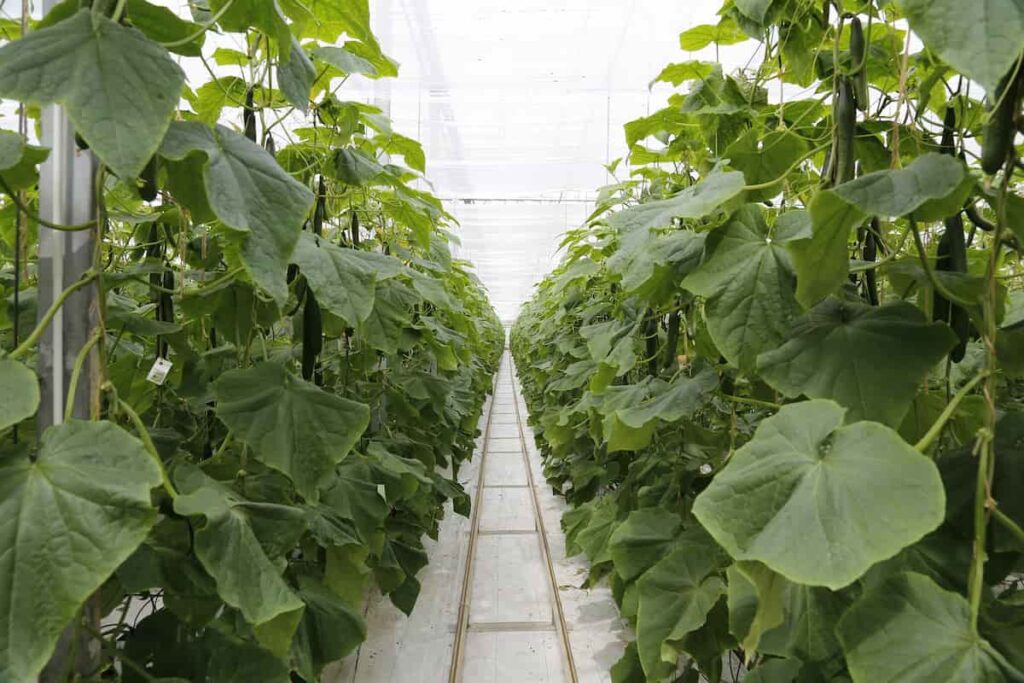
How to start greenhouse farming in Brazil
What is greenhouse farming in Brazil?
Greenhouse farming is a type of agriculture in which plants are grown in a controlled environment. Brazil is one of the world’s leading greenhouse countries. The Brazilian market is becoming increasingly important as demand from developed countries increases and production opportunities increase in developing countries.
The key drivers behind the growth of greenhouse farming in Brazil include increasing demand for food products that are environmentally friendly, sustainable, and health-protective. Additionally, Brazil’s growing population and increased affluence contribute to the country’s greenhouse agriculture sector.
Greenhouse vegetable production in Brazil
The main contributors to this recent growth have been establishing new companies, partnerships between existing businesses, and government support for research and development. There are several advantages to greenhouse vegetable production in Brazil. Firstly, the climate is ideal for growing crops: the country experiences a wide range of temperatures and humidity levels, which makes it conducive to growing various vegetables.
Second, Brazil’s large population is increasingly becoming interested in healthy eating options. Finally, greenhouse vegetables can be produced quickly and cheaply, making them an attractive option for small producers who want to enter the market but lack the resources necessary to grow traditional crops.
In case you missed it: Agriculture Farming in Brazil: How To Start, Major Crops, and A Step by Step Guide for Beginners
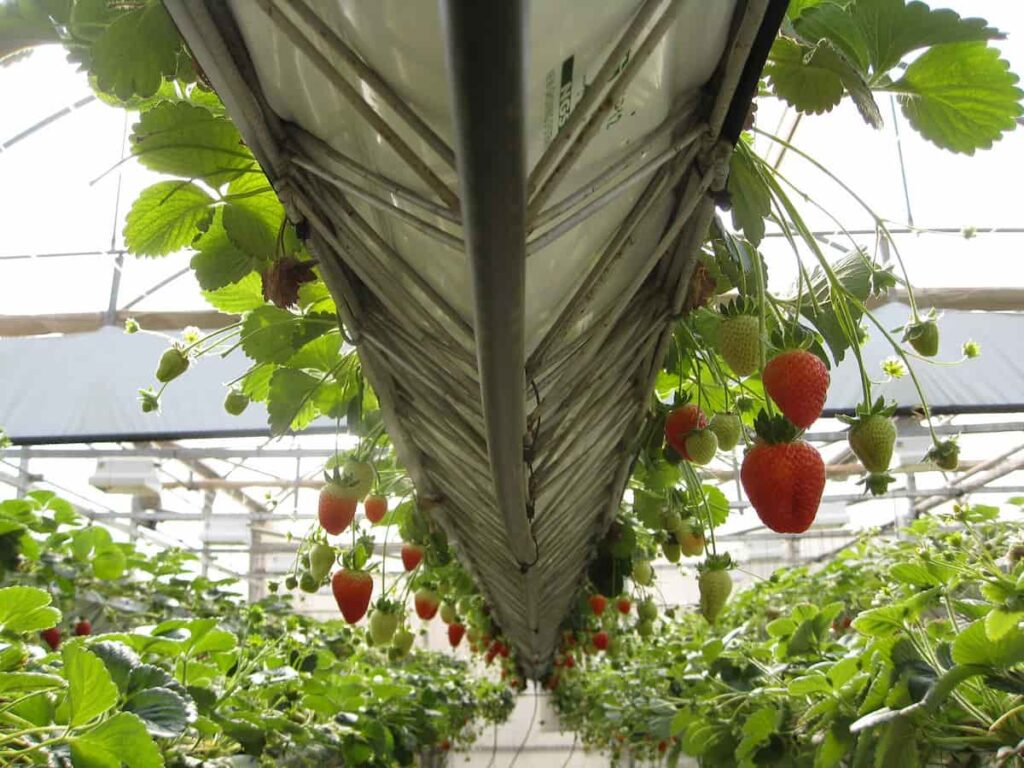
Benefits of greenhouse farming in Brazil
- Greenhouse farming in Brazil has many benefits. These include increased yields, decreased input costs, and better environmental quality.
- Brazil is a large country with a diverse climate. As a result, the country has a range of agricultural soils and climates that can be successfully grown in greenhouses. The best greenhouses are in the Amazon region, where annual rainfall ranges from 1,000 to 2,000 mm. The warm temperature encourages the growth of crops such as Tomatoes, Peppers, Bananas, and citrus fruits.
- Additionally, greenhouse farming in Brazil is a more sustainable option than traditional farming, as it doesn’t require the use of land that could be used for other purposes. Finally, greenhouse farming in Brazil is often more efficient than traditional farming, yielding larger crops with less energy expenditure.
- The greenhouse industry employs over one million people in Brazil. There are several benefits to greenhouse farming in Brazil. First and foremost, the climate is conducive to growing a wide range of crops, including those that may not be suitable for traditional farming methods. Additionally, the country has a large population, so many consumers are interested in buying products from a greenhouse farm. Finally, the high humidity levels in Brazilian greenhouses also help to protect plants from harsh weather conditions outside.
Is greenhouse farming profitable in Brazil?
Greenhouse farming in Brazil is becoming more popular as the climate becomes warmer and the soil becomes drier. Growing plants in a controlled environment were first developed in the Netherlands, and it has since become a major agricultural industry in many countries. There are several factors to consider when greenhouse farming, such as location, climate, and crop type. In Brazil, greenhouse growing is most profitable in regions with warm temperatures and good soils.
Top states for greenhouse farming in Brazil
- Brazil has a long history of greenhouse farming, and the sector is growing rapidly. Brazil’s top five greenhouse farming states are São Paulo, Paraná, Mato Grosso do Sul, Minas Gerais, and Rio de Janeiro.
- São Paulo is Brazil’s largest greenhouse farming state, accounting for 38% of the total area under cultivation. It is followed by Paraná (19%), and Mato Grosso do Sul (13%). The three most important crops grown in greenhouses in São Paulo are Tomatoes, Cucumbers, and Strawberries.
- Paraná is second in terms of area cultivated with greenhouse farms, accounting for 17% of the country’s total area under greenhouses. Its main crops are fruits and vegetables such as Grapes, Avocados, Peppers, and Eggplants.
- Mato Grosso do Sul is third on the list, with 12% of the nation’s total under cultivation in greenhouses. Its main crops are Tomatoes, Maize, and Cotton.
- Rio de Janeiro is fourth, with 10% of the nation’s area under greenhouses. Its main crop is citrus fruits such as oranges and grapefruits.
- Minas Gerais ranks fifth with 6% of the nation’s total area under cultivation in greenhouses. Its main crops are tomatoes and flowers such as roses.
Crops are grown under greenhouses in Brazil
- Crops grown successfully in a greenhouse include Tomatoes, Peppers, Cucumbers, Zucchini, and Watermelons.
- In Brazil, greenhouses are a common sight, as they offer growers a warm and constant environment to grow crops. Greenhouses are also used to cultivate exotic plants that would not normally grow in the country. Brazil’s most popular crops grown in greenhouses include roses, tomatoes, cucumbers, and melons.
- Greenhouses provide an environment that is warmer and more humid than outside, promoting the growth of crops. One of the main benefits of greenhouse farming is that it helps to reduce reliance on imported food. Brazilian farmers grow vegetables and fruits under glass, including Tomatoes, Green Beans, Strawberries, Citrus fruit, and Grapes. This reduces transportation costs and increases the availability of local foods.
In case you missed it: Top Agricultural Universities in Brazil: Best List

Can you grow in a greenhouse farming year-round in Brazil?
Greenhouse farming in Brazil can be a successful option for crops if done correctly. The country has a long growing season, which ranges from 60 to 90 days, and mild weather conditions year-round. There are several factors to consider when greenhouse farming in Brazil: climate, altitude, soil type, and variety selection.
Climate is the most important factor for greenhouse farming in Brazil. The country’s tropical climate and high humidity levels make it ideal for greenhouse farming. Furthermore, climate change is likely to make the Brazilian climate even more favorable for greenhouses, as it will increase the number of days with above-average temperatures. Altitude is also important when greenhouse farming in Brazil.
The higher-elevation areas of the country have thicker soils that are better able to retain water and nutrients. Soil type is another consideration when greenhouse farming in Brazil. The sandy soils near the coast are not as good at retaining water or nutrients as the clay soils inland. Variety selection is also critical when greenhouses grow in Brazil because different varieties of plants respond differently to different climatic conditions and soil types.
Steps to start a greenhouse farming in Brazil?
- The climate in Brazil is perfect for greenhouse farming. The country has a subtropical climate with plenty of sunshine and warm temperatures all year. There is also little rainfall, so irrigation is not necessary. In addition, the soil in Brazil is fertile and does not require the use of pesticides or fertilizers.
- The first step in setting up a greenhouse in Brazil is finding an area you can lease or purchase. Next, you will need zoning approvals from the local government and a building permit. Once you have acquired the land and the necessary permits, begin planning your greenhouse layout.
- Select a site that receives full sun exposure throughout the day. Site your greenhouse on elevated ground to allow for good ventilation and drainage. Build your walls out of sturdy materials, brick or concrete, to prevent wind and rain damage.
- Depending on the greenhouse size, you may need to install heating and cooling systems. For example, if you are growing vegetables, you will likely need a cold frame; if you are growing flowers, you will likely need a warm frame.
- When it comes time to start planting your crops, select varieties tolerant of high temperatures and low humidity levels found inside greenhouses, be sure to buy seeds specifically designed for greenhouse conditions – this will ensure successful crop growth.
What are the different types of greenhouse farms in Brazil?
There are several types of greenhouse farming in Brazil. The three most common types are intensive, semi-intensive, and extensive.
- Intensive greenhouse farming is where the plants are grown indoors in a tightly enclosed space with limited sunlight.
- Semi-intensive greenhouse farming is where the plants are grown indoors in a space with more sunlight and air circulation than intensive farming but with fewer nutrients and water resources.
- Finally, extensive greenhouse farming is where plants are grown outdoors on a large scale in open spaces with plenty of light, water, and nutrients.
Brazil’s greenhouse farming problems
- One problem is that the climate in Brazil is not very suitable for growing many crops in greenhouses. The humidity and temperature levels are too high or low for most plants to survive, and the weather can be unpredictable.
- Another problem is that Brazilian greenhouses are often built on illegally occupied land. This means that the farmers who use these greenhouses do not have proper rights to use the land, making it hard to negotiate fair prices for the crops they produce.
- And finally, there is a lack of infrastructure in Brazil to support large-scale greenhouse farming. This means that the farmers who engage in greenhouse agriculture face many challenges, such as dealing with pests and diseases.
In case you missed it: How To Buy Agricultural Land In Brazil & Who Can
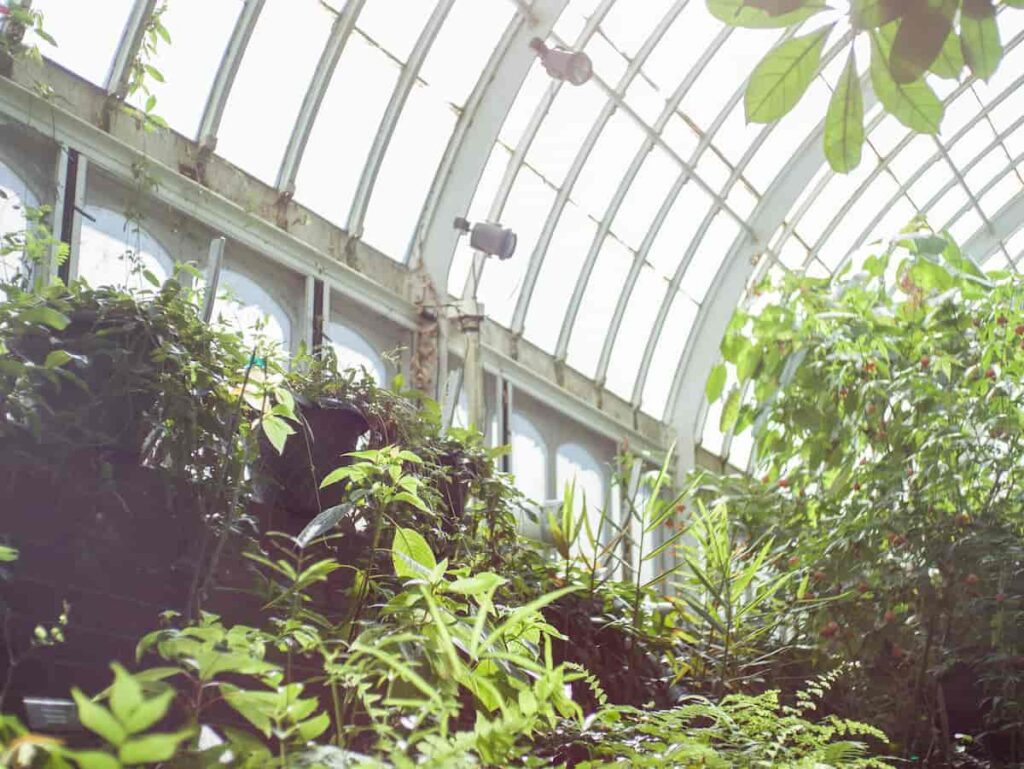
How does greenhouse farming work in Brazil?
Greenhouse farming in Brazil is a type of agriculture that uses greenhouses to grow plants. The greenhouse allows the plants to grow without the need for sunlight or weather outside the greenhouse. This farming method is popular in many parts of the world because it is a method to produce food without needing to use land that would be better used for other purposes. For greenhouse farms in Brazil, farmers first build a “cold frame” structure. This frame is made of plastic and glass and is designed to keep the inside temperature between 18-25°C.
Once the cold frame is up and running, farmers can start planting their crops inside it. Firstly, they will need to choose which crops to grow in the cold frame because Strawberries, Peppers, Tomatoes, Cucumbers, and Roses will all do well in a greenhouse environment. Greenhouse farming has become an increasingly popular way to produce vegetables and fruits in Brazil because it is versatile, efficient, and environmentally friendly.
It also has the potential to help farmers decrease their reliance on rainwater for irrigation purposes, which can be difficult to come by in some areas of Brazil. Additionally, greenhouse farming allows farmers to produce year-round crops, which can be important for products that require a long shelf life, such as fruit juices or vegetables used for processed foods.
Cost to start a greenhouse farm in Brazil
The cost of starting a small greenhouse farm in Brazil can vary depending on the size and type of greenhouse, but overall, it is relatively low. For example, in São Paulo, starting costs for a small commercial greenhouse range from R$30,000 to R$60,000. However, the price tag for a smaller backyard garden-sized greenhouse can still be lower – around R$10,000.
Costs also vary depending on the climate and location of the region. However, greenhouses in warmer regions will cost more to purchase and set up than those in colder climates. Finally, additional costs, such as electricity bills and maintenance fees, are associated with running a greenhouse.
In case you missed it: Poultry Farming In Brazil – Management Practices
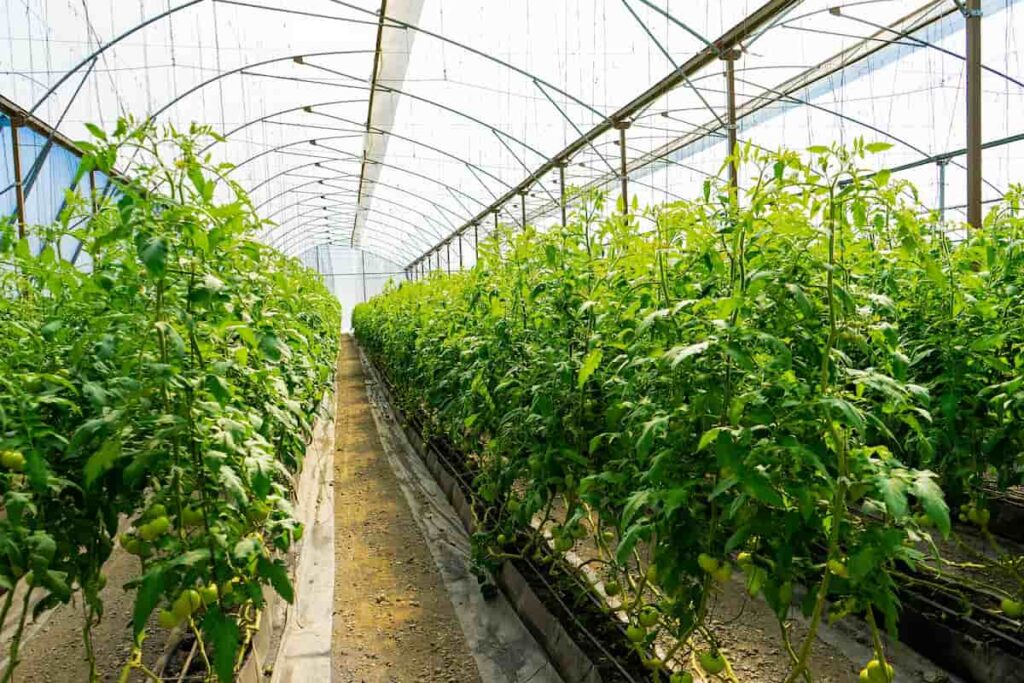
Number of greenhouses in Brazil
Brazil has become a leading greenhouse producer in the world. There are currently more than 6,000 greenhouses in operation in Brazil, with an estimated production of 1.5 million metric tons of Tomatoes and other crops per year. One reason for Brazil’s success in greenhouse farming is its climate. The country has a long tropical season (approximately 184 days) and a short dry season (approximately 40 days).
This combination allows for the year-round production of crops in greenhouses. In addition, Brazil has a well-distributed population that makes it easy to find suitable land for greenhouses. Most greenhouses in Brazil are used to produce tomatoes, but other crops such as cucumbers, peppers, squash, and eggplants are also grown commercially. Greenhouse farming is a relatively new phenomenon in Brazil, so there is still plenty of room for growth.
Steps to starting a greenhouse business in Brazil
Research the market
There is a lot of information on the greenhouse business in Brazil, but it is important to do your own research to ensure you are targeting the right areas and potential customers.
Get a property
Greenhouse farms need a lot of lands, so it is essential to find an appropriate property before starting your business. It is also important to check the zoning laws in your area to make sure you comply with them.
Get the permits and licenses
Unless you start a small garden operation, you will need permits and licenses from local authorities to conduct business. You may be able to get started without any paperwork, but it is always best to check ahead to be sure.
Build the structure
Once you have found a property and obtained all necessary permits and licenses, it is time to start building your greenhouse. This can be very rewarding as experimentation is key for growing successful crops in greenhouses.
Choose the crops
Once your structure is complete, it’s time to choose the crops that will be grown inside. This will largely depend on what region of Brazil you are located in; for example, many farmers in the south grow fruits and vegetables such as tomatoes and peppers, while those in the north grow hardier plants like potatoes and wheat.
Greenhouse subsidy in Brazil
- The Brazilian government provides subsidies to farmers who grow greenhouse crops. The subsidies are designed to help farmers increase their production of greenhouse vegetables and fruits. The subsidies are also designed to reduce the price of greenhouse produce, making it more affordable for consumers.
- The Brazilian government provides a subsidy of up to 50% of the cost of planting a greenhouse crop. The subsidy is available to both small and large farmers. The subsidy is based on the size of the farm, not the type or variety of greenhouse crops being grown.
- The Brazilian government also provides a subsidy for purchasing or installing greenhouses. This subsidy is available to both small and large farmers. The subsidy is based on the size of the farm, not the type or variety of greenhouses being purchased or installed.
In case you missed it: Brazil nut Cultivation – Farming In India
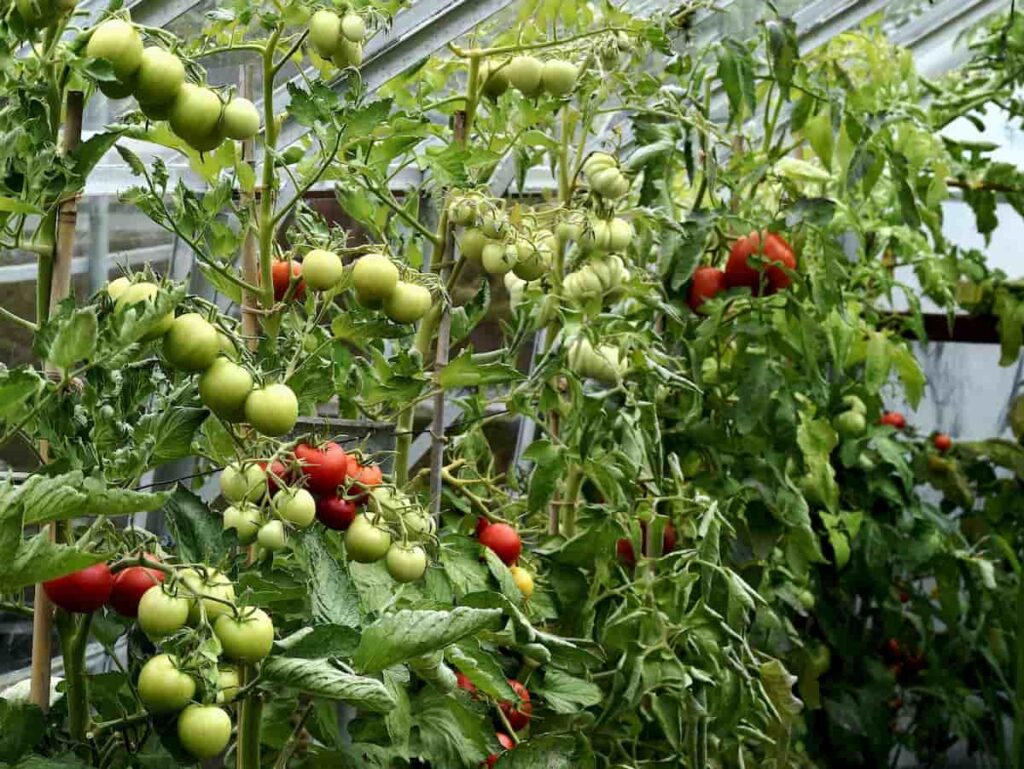
Challenges of greenhouse farming in Brazil
One challenge that Brazilian greenhouse farmers face is weather variability. The country experiences two seasons – a wet and a dry season –which can significantly impact crop production. Additionally, the country suffers from relatively high levels of humidity which can lead to problems with mold growth or rotting fruit inside the greenhouses. There are also concerns about biocides used in conventional agriculture being transferred into the environment when they enter greenhouses via rainfall or irrigation systems.
There are many challenges facing greenhouse farming in Brazil, including a lack of available land, high energy costs, and a lack of skilled labor. Additionally, Brazil has a rainy season that can severely damage greenhouses. The country is also facing the threat of climate change, making it even more difficult to produce crops in greenhouses. Greenhouse farming in Brazil is still in its early stages, and several challenges need to be overcome before this type of agriculture can become an established part of the agricultural landscape.
One significant challenge is that Brazil has a very warm climate, which is ideal for growing crops in greenhouses but is not always conducive to maintaining the plants in those systems. Another challenge is that Brazil has a relatively small land area compared to other countries, which limits the amount that can be used for greenhouse farming. And lastly, regulatory issues need to be addressed before greenhouse farming can become more widespread.
Conclusion
Greenhouse growers in Brazil can produce high-quality crops using less land and water than traditional farmers. This makes greenhouse farming an environmentally friendly option compared to other forms of agriculture. In addition, because greenhouse farming is so energy-efficient, it has become an increasingly popular option for food production.
- Economical Aquaculture: A Guide to Low-Budget Fish Farming
- 15 Common Planting Errors That Can Doom Your Fruit Trees
- How to Make Houseplants Bushy: Effective Tips and Ideas
- Innovative Strategies for Boosting Coconut Pollination and Yield
- Pollination Strategies for Maximum Pumpkin Yield
- The Complete Guide to Chicken Fattening: Strategies for Maximum Growth
- Natural Solutions for Tulip Problems: 100% Effective Remedies for Leaf and Bulb-Related Issues
- Revolutionizing Citrus Preservation: Towards a Healthier, Greener Future
- Natural Solutions for Peony Leaf and Flower Problems: 100% Effective Remedies
- Maximizing Profits with Avocado Contract Farming in India: A Comprehensive Guide
- Natural Solutions for Hydrangea Problems: 100% Effective Remedies for Leaf and Flowers
- The Ultimate Guide to Choosing the Perfect Foliage Friend: Bringing Life Indoors
- From Sunlight to Sustainability: 15 Ways to Use Solar Technology in Agriculture
- The Ultimate Guide to Dong Tao Chicken: Exploring from History to Raising
- The Eco-Friendly Makeover: How to Convert Your Unused Swimming Pool into a Fish Pond
- Mastering the Art of Delaware Chicken Farming: Essentials for Healthy Backyard Flocks
- 20 Best Homemade Fertilizers for Money Plant: DIY Recipes and Application Methods
- How to Craft a Comprehensive Free-Range Chicken Farming Business Plan
- Brighten Your Flock: Raising Easter Egger Chickens for Beauty and Bounty
- How to Optimize Your Poultry Egg Farm Business Plan with These Strategies
- Subsidy for Spirulina Cultivation: How Indian Government Schemes Encouraging Spirulina Farmers
- Ultimate Guide to Raising Dominique Chickens: Breeding, Feeding, Egg-Production, and Care
- Mastering the Art of Raising Jersey Giant Chickens: Care, Feeding, and More
- Ultimate Guide to Raising Legbar Chickens: Breeding, Farming Practices, Diet, Egg-Production
- How to Raise Welsummer Chickens: A Comprehensive Guide for Beginners
- How to Protect Indoor Plants in Winter: A Comprehensive Guide
- Ultimate Guide to Grow Bag Gardening: Tips, Tricks, and Planting Ideas for Urban Gardeners
- Guide to Lotus Cultivation: How to Propagate, Plant, Grow, Care, Cost, and Profit
- Agriculture Drone Subsidy Scheme: Government Kisan Subsidy, License, and How to Apply Online
- Ultimate Guide to Raising Araucana Chickens: Breed Profile, Farming Economics, Diet, and Care
- Bringing Hydroponics to Classroom: Importance, Benefits of Learning for School Students
- Ultimate Guide to Raising Polish Chickens: Breed Profile, Farming Economics, Diet, and Care
- Ultimate Guide to Raising Australorp Chickens: Profile, Farming Economics, Egg Production, Diet, and Care
- Silkie Chicken Farming: Raising Practices, Varieties, Egg Production, Diet, and Care
- Sussex Chicken Farming: Raising Practices, Varieties, Egg Production, Diet and Care
- Homemade Feed Formulations for Livestock: Discover Cost-effective Starter to Finisher Feed Recipes